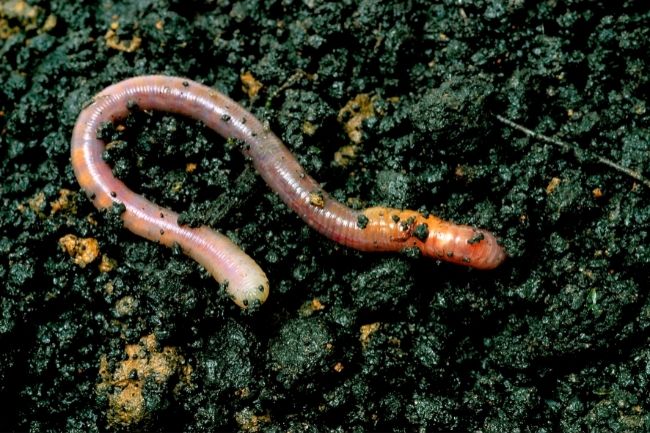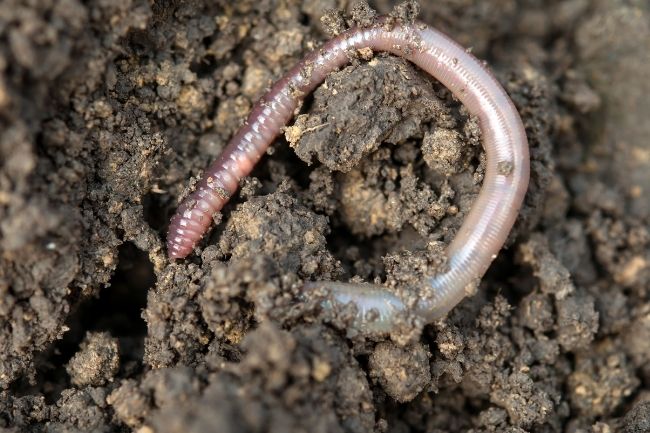Earthworms do not have lungs like mammals, but they do breathe. Earthworms breathe through their skin, oxygen entering into their bloodstream through diffusion. In order for this to occur they need to stay moist at all times.
Contents
Do earthworms breathe through their skin?

While they do have a mouth they cannot use it to breathe as they don’t have lungs. They also don’t have a nose. Yet, they don’t have spiracles like insects. Instead, gas exchange occurs through the surface of the worm’s skin. The worm’s skin is thin and gases move through it due to the level of oxygen being lower inside the worm than externally, and the carbon dioxide being higher internally than externally.
Like most other animals, worms need oxygen to survive. Oxygen helps the worms to metabolise and release energy from food. They breathe in oxygen and breathe out waste gases such as carbon dioxide.
Earthworms have a very unusual and fascinating way of breathing. For mammals, we take in oxygen and expel carbon dioxide through our lungs. The processes may seem entirely automatic to us but the process is surprisingly complex.
| Respiration Method | Description |
|---|---|
| Cutaneous Respiration | Absorption of oxygen and release of carbon dioxide through the skin. |
| Buccal Cavity Respiration | Oxygen uptake through the thin, moist lining of the buccal cavity. |
| Gastrovascular Respiration | Exchange of gases within the circulatory system and body tissues. |
| Soil Respiration | Oxygen uptake from air-filled soil pores and release of carbon dioxide. |
| Aquatic Respiration | Breathing through specialized structures in aquatic environments. |
When we breathe in and out, gases arrive and leave our bodies through our mouths and noses. They are then diffused into our bloodstream through the lining of the lungs. Transported within red blood cells within the blood the oxygen is then delivered to the appropriate organs and muscles.
Many insects operate differently, taking in air passively, with air pressure forcing it into openings in their exoskeleton, known as spiracles. Rather than the oxygen then being circulated within their blood the air is fed directly into the organs and muscles that require it. Surprisingly worms haven’t adopted either of these systems, instead using a rather different design.
Capillaries close to the surface of the skin allow the oxygen to diffuse into the blood and be transported within the worm’s haemoglobin. Worm’s have a closed circulatory system, meaning blood is pumped around contained within veins, unlike insects that have open circulatory systems that do not transport oxygen.
The blood is pumped around the body by the worm’s five hearts, however, the worm’s movement is also an important way to move the oxygenated blood from one end of the worm to the other.
Another important component of this process this one of the aspects of worms we find least appealing, their slimy skin. This layer is made of a mixture of mucus and waste, released by dorsal glands. Part of this liquid is the coelomic fluid that contains a watery matrix, the plasma, and a large number of coelomocytes. Without this moisture, it isn’t possible for the oxygen to be absorbed into the skin.
Also read: Do Earthworms Have Eyes? Here’s How Light Receptors Work
How do worms breathe underground?

While we may think of soil as being a solid block it is actually made up of complex structures, aggregates of soil particles and other components such as fungal strands, animals and plant matter. Between these particles, there are spaces where oxygen can be found.
| Adaptation | Description |
|---|---|
| Thin and Moist Skin | Earthworms have a permeable, thin skin that allows gas exchange. |
| Mucus Production | They produce mucus to keep their skin moist for respiration. |
| Blood Pigments | Hemoglobin-like pigments in their blood enhance oxygen transport. |
| Reduced Mobility | Earthworms move slowly to minimize the need for high oxygen intake. |
| Burrowing Behavior | Burrowing helps create oxygen-rich environments for respiration. |
Compacted or waterlogged soil will not have these pockets of air, meaning that the worms are not able to get enough oxygen, forcing them to emerge from the ground. In order to get enough oxygen worms to need to move through the soil continuously, moving particles around to access oxygen.
Worms also help to aerate the soil, by creating so many complex tunnel systems, which allow the air into the ground.
Also read: Earthworms’ Brains Explained (A Collection of Nerves)
Can worms breathe underwater?
The moist liquid around the worm allows these worms to breathe. If this layer dries out the worm will suffocate.
However, conversely, too much water isn’t good for worms either. While worms can survive in water without drowning, they cannot access the dissolved oxygen within the water very readily, meaning they will suffocate over time if submerged for too long.
When it rains worms are often found to emerge from the soil to move across the ground. Scientists still aren’t sure why earthworms do this, as it exposes them to unnecessary risk. However, one suggestion is that they do this to move between different places, as it is easier to move over the ground when it is wet. Another reason they may emerge is if the soil becomes waterlogged.
Breathing deeply
A worm’s entire circulatory system is designed to cope with life below the soil. This means that outside the soil it is a system that can become unsuitable, as the moist layer around the worm is likely to dry up.
Even within the soil, very dry or wet conditions can affect the worm’s ability to breathe. To protect themselves from extreme conditions many worms will dig down deep and curl up tightly, entering diapause, a similar state to hibernation when the ground around them becomes unsuitable.
Once conditions improve our little worms can breathe a sigh of relief, unfurling and going about their day once more.

